P.PSH.1212 - Finishing lambs: optimising preparation
This project will identify how to optimise the backgrounding of lambs from as early as pre-weaning to improve rumen development and subsequent performance during the finishing phase?
| Project start date: | 30 September 2020 |
| Project end date: | 29 April 2023 |
| Publication date: | 14 May 2024 |
| Project status: | Completed |
| Livestock species: | Sheep, Lamb |
| Relevant regions: | NSW, Western Australia, Victoria, South Australia, Dry, Queensland, Mediterranean, Tasmania, Temperate, Temperate sub-humid |
|
Download Report
(2.2 MB)
|
|
Summary
Lamb feeding is becoming an important component of lamb production systems in Australia, providing insurance against drought and allowing year-round supply of product. However, it is unlikely that the genetic potential for growth of prime lambs is being achieved by commercial lamb finishers.
This failure of lambs to reach their genetic potential is due to the insufficient intake of feed to maximise growth (rather than insufficient feed quality), resulting from sub-optimal capacity of the digestive system, lack of familiarity with feedstuff, palatability of the feed source and stress induced appetite suppression.
Through extensive engagement with commercial feedlotters and the conducting of adaptation animal trials the project aims to identify clear guidelines for preparing lambs for feeding and adapting lambs to feed.
Objectives
The study aimed to:
1) Identify possible constraints on nutrient intake with the aim of increasing daily growth rates and enabling the producer to predict growth rates, feed intake for feed and financial budgeting;
2) Investigate optimisation of pre feedlot backgrounding to reduce shy feeders and poor doers and identify best practice management of these animals.
Key findings
Key findings from this project are:
• Nutrient intake is the predominant constraint to maximising lamb growth rates in intensive feeding production systems and improving adaptation to diet and diet composition are key components to improving production.
• Providing lambs with a feedlot ration prior to feedlot entry and the commencement of an induction period may increase feed intake and growth rates in the feedlot following induction, but more research is required to confirm this and the mechanisms responsible.
• The commonly reported phenomenon of compensatory growth (whereby animals previously restricted exhibit faster growth with improved feed conversion ratios to their continuously grown counterparts) was not observed in the current research highlighting the importance of accurately predicting heat production energy costs to better predict growth responses.
• Lambs fed energy dense, grain based diets in outdoor confined bare-earth pens deposit a greater amount of fat and decreased lean tissue in comparison to pasture fed animals.
• CT scanning of lambs demonstrated considerable advantages for assessing treatment impacts on body composition compared with comparative slaughter studies, as it is a non-destructive method for repeated measures of body compositional changes in growing lambs.
Benefits to industry
The R&D conducted through this project benefits industry through further explaining:
- the variability in lamb growth rates commonly observed in both commercial and research situations.
- variations in lamb growth in response to intensively feeding lambs in commercial situations through an improved understanding of the effects of nutrient supply on gut fill, organ mass and body composition.
- providing a methodology for researchers to conduct experiments to determine treatment effects with greater precision and will hopefully stimulate researchers to not rely solely on animal liveweight to make conclusions.
MLA action
Further R&D into sheep feedlot R&D and shy feeders is required to provide guidelines for industry. Currently limited interest in ranking as a key levy priority so funding would be required through MDC
Future research
Suggestions for future research:
• A longitudinal study over multiple seasons collecting data from a range of feedlots with different feeding systems, diet types, induction protocols and lamb genotypes,
• Assessment of benefits to lamb growth rate and nutrient intake of creep feeding and backgrounding across multiple seasons with recording of individual animal intake and analysis of rumen parameters.
• Research to better understand the effects of pasture characteristics (quality and quantity) on supplement and pasture intake whilst grazing pasture.
• Research that includes recording of individual animal intake and body compositional changes of diverse sheep genotypes (such as Merinos, cross-breds and shedding sheep) in a feedlot environment.
• Experiments feeding a wide range of diets (such as varied grain and forage contents and varied protein and energy supply) and feeding levels to lambs in confinement feeding to further evaluate and develop predictive lamb growth models.
• Assessment of the activity energy costs of grazing, ruminating and walking in sheep grazing pasture to quantify the energy conserved by confining lambs in a feedlot.
More information
| Project manager: | Melanie Smith |
| Contact email: | reports@mla.com.au |
| Primary researcher: | Liaison Officer Research Office |


